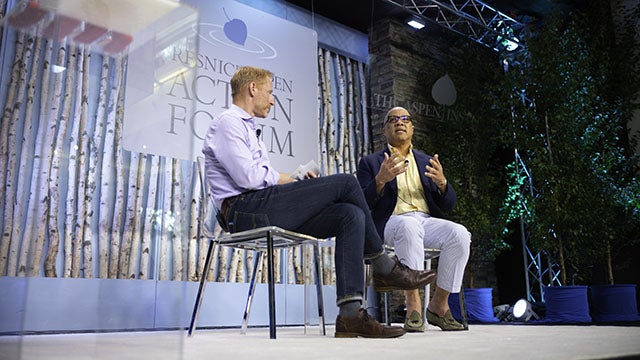Creative industries – including art, crafts, design, film, and music – employ millions of people across the globe. In the US alone, more than 4 percent of all businesses are involved in the creation or distribution of the arts. These businesses not only drive job creation and economic growth, but also play a critical role in community revitalization and cultural preservation.
Still, creative businesses are not included in traditional investment portfolios. The arts receive only 5 percent of philanthropic giving in the US. In impact investing, the creative economy is virtually invisible; in 2015, the Global Impact Investing Network showed that 0 percent of impact investment is in the arts and culture sector.
The Clinton Foundation and the Aspen Institute Artisan Alliance are building a cross-sector coalition of partners committed to changing this narrative. In September 2018, the two organizations hosted their second roundtable discussion around innovative financing in the creative economy. The meeting convened 25 impact investors, philanthropists, artisan entrepreneurs, and creative economy experts who began to uncover some of the barriers facing investors in the creative economy and to explore new investment opportunities for the sector.
Takeaways from the conversation included:
- Impact investing needs a creativity lens.
Laura Callanan, founding partner of Upstart Co-Lab, opened the roundtable discussion by presenting top line findings from the organization’s upcoming report identifying 100 existing funds and 125 new opportunities for impact investing in the creative economy. Few impact funds were entirely focused on the creative economy in the past, but three such funds are launching this year: the Nesta Arts Impact Fund II and the Cultural Land Trust in the UK; and the LISC NYC Inclusive Creative Economy Fund in the US. These will join the majority of impact funds included in the study that have either been focused on a single segment of the creative economy (like ethical and sustainable fashion) or on another impact priority like supporting women entrepreneurs (many of whom launch businesses in the creative industries). Upstart believes impact investors should follow the lead of gender lens investors and adopt a “creativity lens” to bring into focus opportunities to drive returns and impact through food, fashion, media, and other creative industries.
- Close the knowledge gap between funders and creative entrepreneurs.
Banks and impact investors do not understand the needs of creative entrepreneurs. At the same time, artists, filmmakers, and artisan business owners are not trained in traditional business skills and do not know where to look for funding. Alice Loy, co-founder of Creative Startups, shared that many creative entrepreneurs entering her accelerator program do not know the difference between equity and debt. Knowledge gaps are even wider in remote and indigenous communities. How can we break down current systems that exclude creative businesses to drive new resources to the creative economy in a sustainable and inclusive way?
- Creative businesses need working capital.
Many creative businesses, particularly artisan businesses, work on a purchase-order payment scheme. Large retailers will not pay a supplier’s invoice until up to 60 days after the order is fulfilled. To complete an order, small-scale business owners need working capital upfront to buy raw materials and increase production. One creative entrepreneur, Olivia Byanyima of Olivia-Knox, shared that even with a multi-million-dollar purchase order she could not secure funding from banks or impact investors. Without working capital funding, entrepreneurs rely on personal resources and networks and are often unable to scale.
- Storytelling of people and place matters.
We can begin to break down barriers facing funders and impact investors through storytelling. Sam Marks, Executive Director of LISC NYC, discussed the NYC Inclusive Creative Economy Fund. The fund targets affordable spaces for New York artists, artisans and small manufacturers, and is engaging impact investors through the stories of economic revitalization in their own communities. This fund builds on LISC’s 40-year track record deploying capital through a place-based lens. By demonstrating impact through stories, efforts like LISC’s can pave the way for other investment vehicles directed at the creative sector.
Moving these ideas to action, the group realized, will require a committed group of first movers. These conversations are just getting started, and the group is eager to explore other opportunities to support this untapped start-up economy.
If you are interested in joining this cross-sector coalition, or have other ideas of how to generate strategic investments in the creative economy, please do not hesitate to reach out to the Clinton Foundation and the Aspen Institute’s Artisan Alliance at info@allianceartisan.org.

